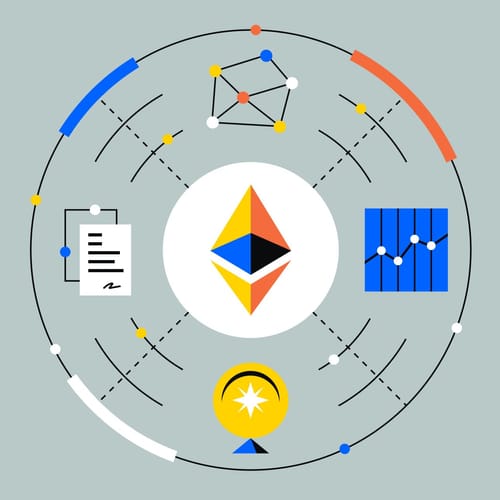Ethereum, the backbone of decentralized finance and countless blockchain applications, has faced significant challenges in scalability. High gas fees and network congestion often deter everyday users, sparking the rise of Layer 2 solutions like rollups. Among the frontrunners in this space are Taiko, zkSync, and Arbitrum — each offering unique approaches to making Ethereum faster, cheaper, and more user-friendly.
Ethereum’s Scalability Challenge
As Ethereum adoption grows, the network has struggled to accommodate increasing demand, leading to high transaction costs and slow confirmation times. Rollups — Layer 2 solutions that batch transactions and process them off-chain — are a key technology addressing these bottlenecks. By enabling faster and more cost-effective transactions while maintaining Ethereum's robust security, rollups are reshaping the blockchain landscape.
Comparing Rollup Approaches: Taiko, zkSync, and Arbitrum
Taiko: A "Based Rollup" True to Ethereum’s EthosTaiko positions itself as a "based rollup," meaning it is deeply aligned with Ethereum's ethos of decentralization and permissionlessness. Unlike zkSync and Arbitrum, which operate with centralized sequencers, Taiko uses Ethereum’s sequencers for its transactions. This tight alignment ensures Taiko has no direct influence on the sequencers and is as secure and permissionless and Ethereum.
In November 2024, Taiko introduced a multi-proof system powered by Succinct and RISC Zero. This architecture allows Taiko to process up to 5 million daily transactions, offering unparalleled scalability and resilience. By using multiple proofs instead of a single one, Taiko enhances the efficiency and security of transaction verification.
Taiko’s transaction preconfirmation technology promises near-instant visibility for transactions, bypassing Ethereum’s typical block confirmation times. This innovation is aimed at improving the user experience, enabling seamless interactions for dApps and everyday users alike.
Taiko’s Ontake Hardfork introduced enhancements like advanced EIP-1559 mechanisms, batch transaction support, and improved data availability. These upgrades not only reduce transaction costs but also lay the groundwork for Taiko’s upcoming DAO launch and increased adoption.
zkSync: Pioneering Zero-Knowledge Proofs
zkSync is one of the most prominent ZK-rollups, leveraging zero-knowledge proofs to ensure both scalability and privacy. Its recent advancements, including zkSync Era, focus on developer-friendly features like account abstraction, which simplifies user interactions and reduces onboarding friction. zkSync emphasizes usability, providing tools and infrastructure that allow developers to build scalable dApps without sacrificing Ethereum compatibility.
A key innovation from zkSync is its focus on interoperability within the Ethereum ecosystem. By maintaining full EVM compatibility, zkSync makes it easy for developers to migrate existing applications to its rollup without significant rewrites. This approach prioritizes ecosystem growth, aiming to reduce fragmentation and streamline user experiences.
Arbitrum: Optimistic Rollups with Proven Ecosystem Growth
Arbitrum takes a different approach, relying on optimistic rollups. Instead of using cryptographic proofs like zkSync, Arbitrum assumes transactions are valid and only verifies them when a challenge is raised. This allows for higher throughput and lower computational overhead, making Arbitrum one of the most efficient solutions available.
Arbitrum has built a thriving ecosystem, with many decentralized applications (dApps) choosing its platform due to its established network effects and developer support. Unlike ZK-rollups, optimistic rollups like Arbitrum are generally easier to implement and scale in the short term, though they trade off slightly on the security guarantees offered by zero-knowledge proofs.
The Fragmentation Challenge
While rollups like zkSync, Arbitrum, and Taiko are making Ethereum more scalable, they also risk fragmenting the ecosystem. Each rollup operates as a semi-independent network, creating potential barriers to interoperability. zkSync and Arbitrum address this by emphasizing EVM compatibility and cross-chain tools, while Taiko seeks to solve the issue by aligning more closely with Ethereum’s architecture.
Revenue and Market Position
Among rollups, Taiko has emerged as a leader in revenue generation, reportedly achieving the second-highest revenue among all Ethereum Layer 2 solutions. This positions Taiko as a serious contender in the rollup space, though zkSync and Arbitrum continue to lead in ecosystem size and developer adoption.
The Road Ahead for Rollups
The competition between rollups is driving rapid innovation, with each project contributing unique solutions to Ethereum’s scalability challenges. zkSync focuses on user experience and developer tools, Arbitrum excels in throughput and ecosystem growth, and Taiko prioritizes decentralization and Ethereum alignment.
As the first based rollup, Taiko has pioneered an area of scalability design that is likely to be picked up and replicated by more Layer 2s over the next few years. The benefits of aligning with Ethereum are significant and with Taiko’s improvements in transaction processing, it will likely become even clearer that a based design, supplemented with zk-proofs, is the best option to make Ethereum accessible again for everyday users.


